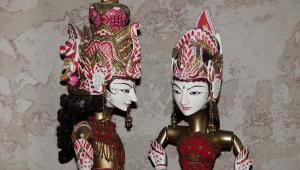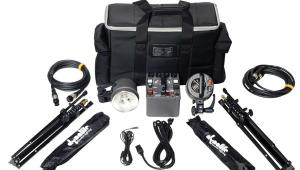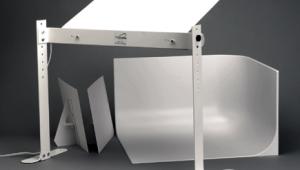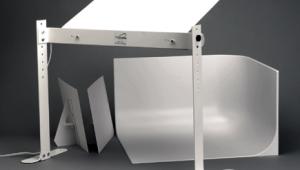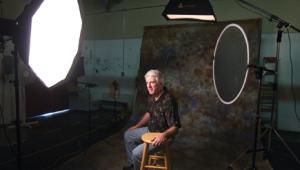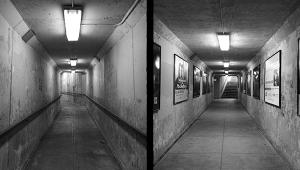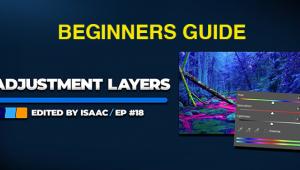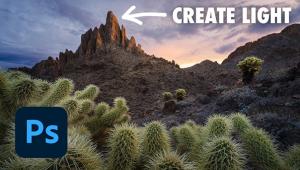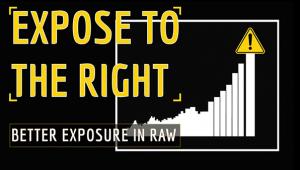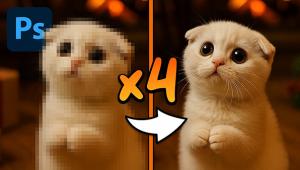Studio Flash Lighting; There’s A System To Fit Every Need
Studio lighting often carries with it the stigma of high cost and high demands (on electricity and learning curve), but that is not necessarily the case. Studio lighting is only as complicated as you make it. You can buy an inexpensive set of lights that will do all you need, with a short learning curve, without fear of shorting circuits around the house. Augment these lights with a few accessories and you'll have a fully functional starter's kit that will last a long time. One of these accessories is a handheld light meter. Beyond that are numerous options that will help shape your lighting and your pictures, giving them the depth they need. But for the most part, you can get everything you need in kit form, which is priced more economically than buying individual components and gives you practically everything you need at the outset, neatly wrapped up in a tidy package, storage case included.
 |
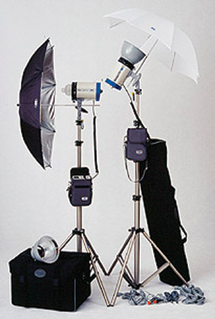 |
With any studio lighting system, you may have to compromise. Yes, you can take the less expensive route, but you'll have to forego all those fancy bells and whistles. No problem, you say. Well, you may have to do with a little less power. Still not a problem? What about size and portability: Do you need a mobile system for travel or one that that is small enough that it can be neatly tucked away in a corner or closet in your home studio? There are compact power packs, but let's look at an even simpler solution first.
Monolights
Also referred to as a "monobloc," a monolight is a self-contained
studio strobe system housed in one unit, normally running off AC (battery optional
on select systems). Any studio strobe usually requires a sync cord connection
to the camera's X-sync terminal (or other terminal via an adapter), and
the monolight is no exception. A monolight plugs into the wall, although some
are optionally battery operated. Note: When connecting either a monolight or
power pack to the camera or to a flash meter (and when disconnecting), be sure
the power to the light is turned off to avoid a short that will trigger the
strobes accidentally.
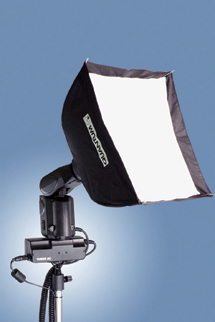 |
As is true for flash heads attached to power packs, the monolight houses the
flash tube (sometimes behind a protective dome) at the business end of the unit,
surrounded by a reflector that may or may not be interchangeable. In a monolight,
all the controls are usually found on the back of the housing (sometimes the
side), which is the center of operations. Fancier monolights may feature a digital
display and touch-pad operation.
What photographers especially like about a self-contained strobe is that they
have individual control over each lighting unit. And monolights are easy to
work with. What's more, if you have multiple monolights and one goes down,
you still have others to work with. The disadvantage is that, when working with
more than one, you have to walk over to each one separately and set the controls.
Remote controls (available for select systems) alleviate that problem, at a
price. Another disadvantage: high-powered units are heavy and bulky and the
added weight of a softbox can destabilize them, making heavy-duty light stands
mandatory. Otherwise, any standard light stand should do with units of 1000
ws (watt second) and under.
And if you're saying to yourself, my shoe mount is self-contained--what's
the difference? Does your shoe mount (or typical handle mount) have a modeling
light, especially one that stays on as long as needed? The answer is an emphatic
No! The modeling light is important for compositional control, enabling you
to visualize the effect the lights will produce.
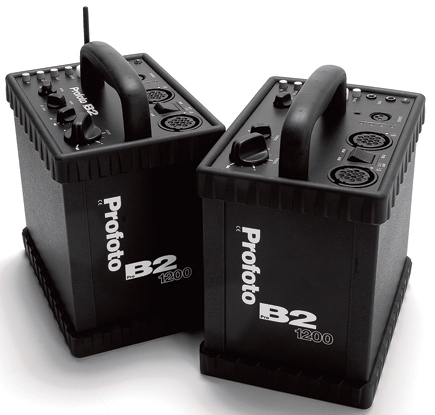 |
Power Pack Systems
The power pack is often the heart of the professional photographer's system
for intensive and extensive applications inside the studio and out. Each pack
is the power behind the system (hence the term "generator"), with
most AC operated (with an increasing number battery powered). Power packs may
have anywhere from two to four (or more) outlets for flash heads, with each
head drawing power from this central source.
As the brains of the system, all controls are centrally located on this box.
The generator routinely comes equipped with optical, infrared, or radio-slave
triggering (varies with the system). The power pack also controls the modeling
light inside each head. Because it is little more than a set of bulbs (flash
tube plus modeling lamp) and a reflector, the head attached to the power pack
is much lighter than a comparable-output monolight.
 |
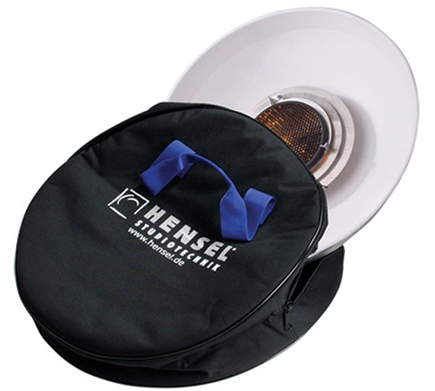 |
Power can be distributed to the attached heads in two essential ways on a pack.
Symmetric power distribution means that all heads have equal access to the available
power. Asymmetric distribution means more power can go to one head (or one set
of heads in a row of outlets), at the expense of another, depending on which
outlet the heads are plugged into. Power can be further tweaked with a "variator"
dial. Because the monolight is self-contained, it of course draws all the power
to itself, but there is also a variator to increase or decrease output as needed.
Power regulation should optimally be continuously variable or in very small
steps.
Because multiple heads each draw off power, commercial shooters tend to devote
one pack to one head, so they have more leeway in lighting. That also means
a much larger investment in a power pack system, and more stuff to stow or carry
on location.
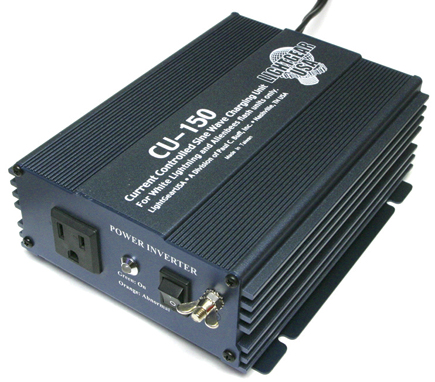 |
Power packs generally pack more punch in potential power output (watt second) and in versatility, compared with monolights. More importantly, select power packs may offer ultra-short flash duration in a very brief burst of light--short enough to stop motion with tack-sharp accuracy. So if you want to freeze a ballerina in midair, you can. The longer flash durations on monolights and more conventional power pack systems would blur the movement.
Mobile Lighting And AC Slaves
Mobile power pack systems and monolights are becoming more widely available
and increasingly popular.
Battery-operated lights are convenient, especially on location, with the most
functional units being system-oriented. But they are not a replacement for a
full-size studio system back home. Battery-powered lights may be used by themselves,
to light an entire set, or simply as support lighting (such as fill). There
are also "sine wave inverters" that can be used to power any lighting
system on location, up to a stated capacity in watt second, supporting one or
two heads (or more).
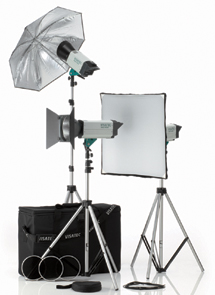 |
 |
Battery-driven lights offer (1) limited use of the modeling light, (2) a very
low-output modeling lamp, or (3) no modeling light--all to prevent unnecessary
drain on the battery pack. Recycling times will be longer than on more robust
AC studio packs. The battery packs themselves can be quite heavy. But then again,
AC packs are often larger and heavier.
There are smaller, lighter systems designed primarily as more capable replacements
for your shoe-mount strobe, essentially combining what amounts to a very robust
handle-mount strobe and lightweight, portable power supply. The longer battery
life and fast recycling afforded by these systems make them well suited to event
photography, such as weddings and publicity functions.
 |
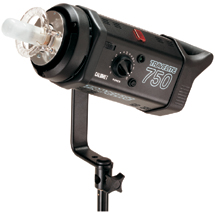 |
AC slave lights are more akin to a shoe-mount strobe, being very basic in construction. They plug into an outlet, or table lamp and come with few, if any, controls to speak of and routinely lack a modeling light. AC slave-flash units are, however, very economical as fill or accent lights. They're great for little nooks and crannies. The photo-optical slave-triggering mechanism is built-in.





